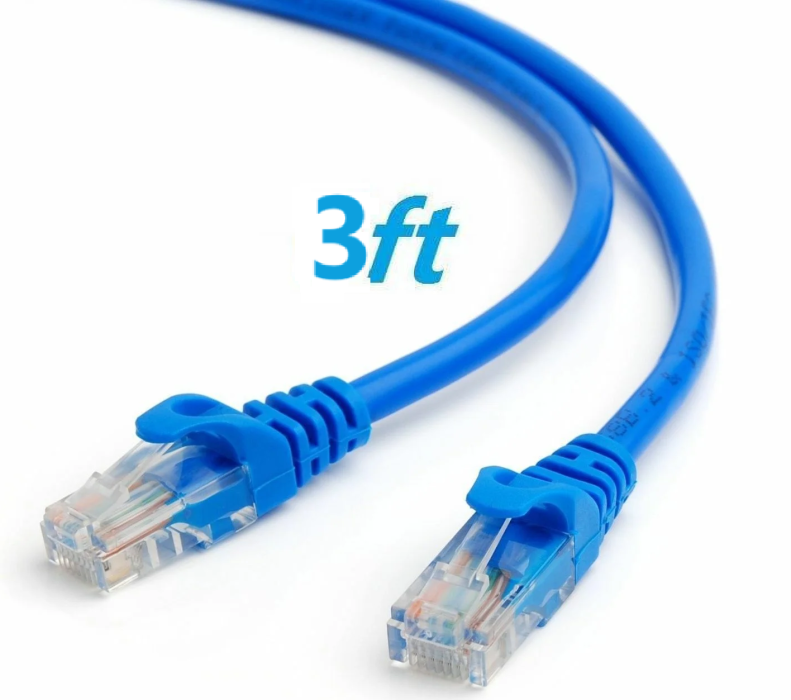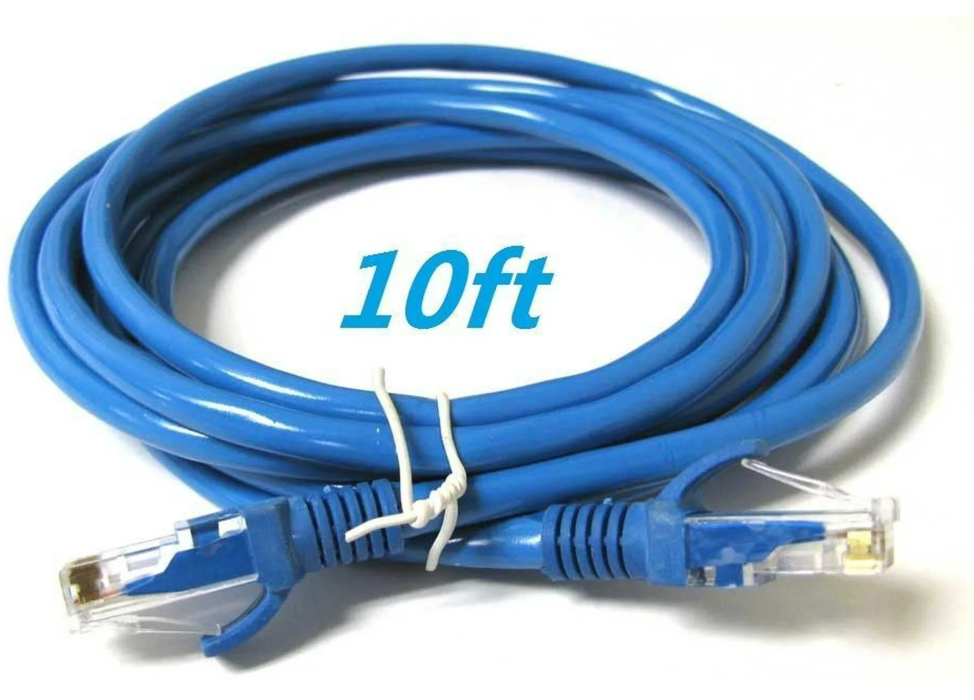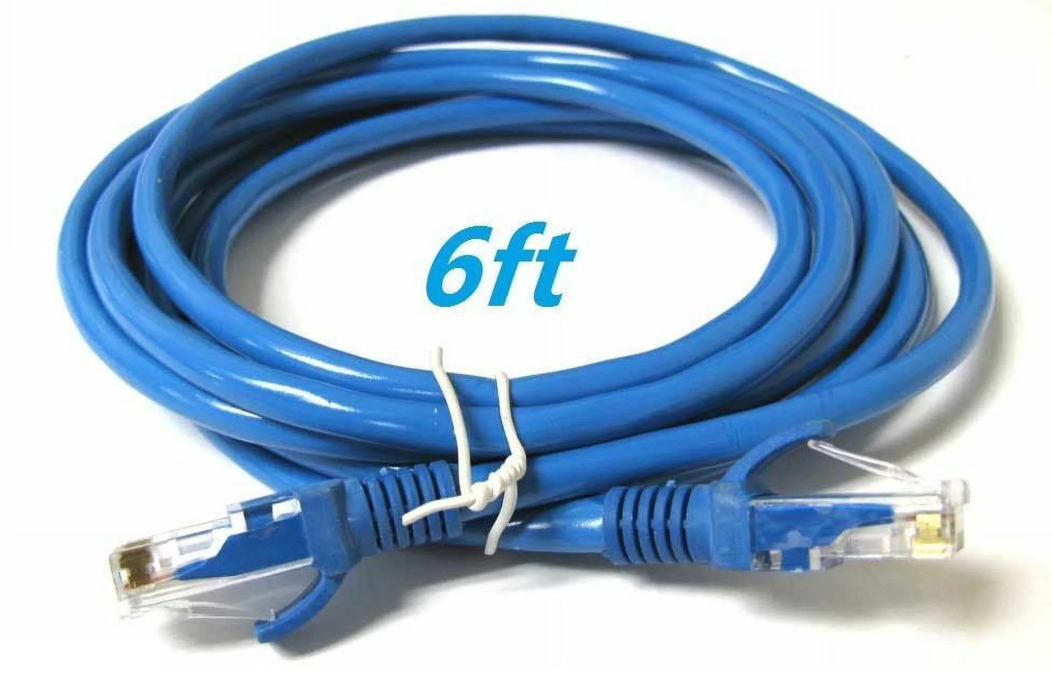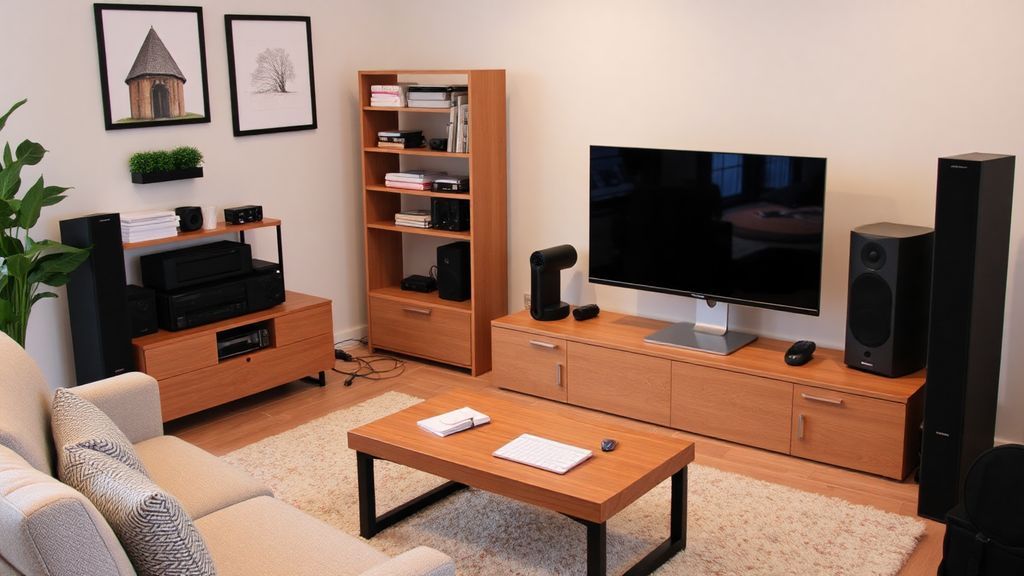Blog, Network Cabling
Short or Long Ethernet Cable: How to Choose?
In today’s rapidly developing digital age, a stable and efficient network connection has become indispensable to people’s work, study, and recreational lives. Ethernet cables are key in building a reliable wired network, often making it difficult for many people to choose. How do you choose a long Ethernet cable vs. a short Ethernet cable? There is a lot to learn from this.
Table of contents
Different usage scenarios determine the cable length

Home Office Scene
The computer is most likely placed on the desktop next to the router in a small home study. This scenario has a compact layout and takes up minimal space. So, a short 1 – 3 feet Ethernet cable is optimal for the easiest network access. It gives the desktop a clean look and avoids the visual distraction of cable clutter. More importantly, it eliminates tripping hazards caused by trailing, tangled cables.

Gaming Scene
Gamers are susceptible to network latency, and a one-second time difference may affect the game. If the gaming machine or computer is placed next to the router, the short cable is the first choice.
However, suppose the gaming room is located on the other side of the room, 10-15 feet away from the network source. In that case, a medium-length cable comes in handy. While signal degradation is risky with long wires, high-specification quality products such as those rated Cat6 and above can minimize signal degradation over slightly longer distances. These medium-length cables are built and shielded to deliver excellent network performance and help gamers keep the game flowing.

Living Room Entertainment Center
Smart TVs and streaming media playback devices are gathered in the living room entertainment area, and the cable length should consider the furniture’s layout. Suppose the TV rack is close to the wall where the router is located. In that case, a 3-6 feet short cable is enough to create a “highway” between the devices.
If the TV cabinet is far away in the opposite corner of the living room, 15-ft or even longer cables become necessary. In this scenario, the shielding performance of the cable is particularly critical, and electromagnetic interference from the surrounding speakers, TVs, game consoles, and other electronic devices can be rejected to ensure that the network signal is “all the way through.” So, high-definition film and television programs and online video playback are available without lag.

Commercial Office Environment
Open office areas are densely populated with workstations and limited network interfaces, which often must be routed from the server room or the main route to each workstation. Workstation spacing ranging from 20 – 50 ft of cable is necessary, which is neatly laid in the trunk and under the floor to connect the office network. This ensures the smooth running of daily document collaboration and video conferencing.

Campus Network Layout
In campus computer rooms, dozens or even hundreds of computers must be connected to the network, and the distance between servers and terminals often exceeds 50 ft. Using 50 – 100 ft of cable with a switch can efficiently build a local area network to meet the needs of teaching software, data download, and online course interaction.
Large-scale campus activities, such as outdoor temporary examination halls, cultural performances, and live broadcast venue set up, the need to lead from the network center of the academic building to hundreds of feet away from the site, this time the need for ultra-long Ethernet cables.

Industrial Production Workshop
Modern factories have vast plants, and the production line equipment should upload production data and receive central control commands in real time. Sensors, controllers, and shop floor control rooms are often more than 100 ft apart, with 100 – 300 ft long cable shuttle between them, exceptional protection, and resistance to shop floor oil, dust, and electromagnetic interference to maintain accurate network communication between production.
However, it should also be mentioned that increasingly industrial environments are adopting wireless communication technologies, such as WiFi 6E, so there may be other solutions for long-distance communication in real environments.
Cable length and signal quality
Signal attenuation is a key consideration when picking an Ethernet cable length. As cables get longer, the internal resistance of the wires increases, and signal strength decreases. Cat5 cables are a typical example, and when extended beyond 100 meters (about 328 ft), the performance shortcomings become apparent, with slower data transfer speeds and increased packet loss.
In contrast, Cat6, Cat6a, cat7, cat8, and other advanced cables can maintain relatively stable signal quality over longer distances due to better construction and enhanced shielding. However, even for high-end cables, the ultra-long distance laying, once far beyond the upper limit of the standard, will be faced with packet loss, network speed plummeted, latency soaring, and other tricky conditions. Online games, video conferencing, and other network stability requirements for the scene include instant lag. So, ideally, the maximum length of an Ethernet cable is 328 ft.
However, shorter Ethernet cables are less susceptible to external interference and offer better transmission speeds.
The trade-off between cable length and cost factors
Short Ethernet cables are affordable, so you can easily save money if you only need a short connection. Compared to short cables, Longer cables, especially if they are of high quality, come with enhanced shielding, thicker wires, and other “black tech,” which can skyrocket in cost. For example, a 1-ft Cat6 cable can be purchased on Amazon for a few dollars, while a 50-ft cable is three times more expensive.
But “the longer the cable, the more expensive it is” is not always correct. It is worth mentioning that certain vendors may charge less for longer cables due to inventory, promotions, packaging, etc. However, it is essential to remember that long wires are preferred for long-distance needs. Longer cables require more raw materials (e.g., copper conductors, insulation, shielding materials, etc.) to manufacture, and the production process’s quality control and testing aspects may be more complex for longer cables.
Don’t choose poor-quality cables for cheapness; you will frequently drop your connection, face tortoise-speed transmission, and other network failures. Repeated troubleshooting network problems is time-consuming and labor-intensive, and delays everyday use.

Consideration for future layout
Technology advances every day, and life scenarios can change at any time. When purchasing cables, consider the next few months and years in equipment placement. The furniture layout may be adjusted.
Suppose you plan to move your desk, expand your workspace, or upgrade your entertainment equipment shortly. In that case, you should be proactive and start purchasing longer cables. Reserve the cable adjustment space for subsequent network upgrades and equipment relocation. You can avoid the tedious process of rewiring and purchasing new cables.

FAQ
Q. I am still determining the distance between my device and the router. How can I choose the cable length?
A. It is recommended to measure the straight-line distance between the two roughly. If the distance is less than 5 ft, choose a short cable. 5-15 ft can be considered medium length. More than 15 ft, prepare for a long cable. At the same time, reserve 1 – 2 ft of redundancy to cope with possible fine-tuning of the location so that you do not have to replace the cable in a hurry when you move the equipment subsequently.
Q. Is there a remedy for poor signal on long Ethernet cables?
A. First: Prioritize replacing the cable with a higher specification cable, such as upgrading from Cat5e to Cat6a, which has superior interference immunity and long-distance transmission capability.
Secondly, signal repeaters and switches can be added to enhance the signal during transmission and compensate for the long-distance loss.
Third, check whether there are any strong interference sources around the cable. Remove or shield interference devices, such as microwave ovens and other strong electromagnetic interference devices, as far away as possible from the network cable.
Q. Will short cables limit future network upgrades?
A. Short cables, in terms of length, generally do not affect upgrades. However, suppose the specification is too low, such as old Cat5 cables. In that case, upgrading to a Gigabit network in the future will be difficult because its bandwidth limit can’t meet the demand for high-speed transmission. Use short cables with Cat6 or higher standards for more upgrade scenarios and to keep your network up-to-date.
Q. Is there a limit to how long Ethernet cables can be bent?
A. Yes. Excessive bending will change the internal core structure of the cable and increase signal reflection and attenuation. Generally speaking, there is an industry standard for the minimum bending radius of Ethernet cables. For example, for standard Cat6 cables, the recommended bending radius is at least 4 times the outer diameter of the cable. Follow this standard when cabling to prevent cable and signal transmission damage due to improper bending.
Q. Is there a difference between different colors of Ethernet cables? Are they functionally the same?
A. The color is only for the convenience of wiring management and differentiation of different lines. There is no substantial difference in function. Whether it is blue or yellow cable, as long as the category (e.g., Cat6) is the same, the transmission performance is the same. You can choose the color you like, which is easy to identify for wiring planning.
Q. What is the longest Ethernet cable can go?
A. The maximum length of an Ethernet cable is 328 ft (100 meters). Once this size is exceeded, the cable’s ability to carry data is compromised. You can find more in this blog: “Maximum length of Ethernet cable: How Long Can It Be?“.
Conclusion
With this detailed guide, the next time you decide between long and short Ethernet cables, you will be more accurate in choosing the ideal cable for your needs. The right length of Ethernet cable ensures the quality and speed of network transmission, facilitates network expansion in the future, and keeps the cables tidy and clutter-free.







